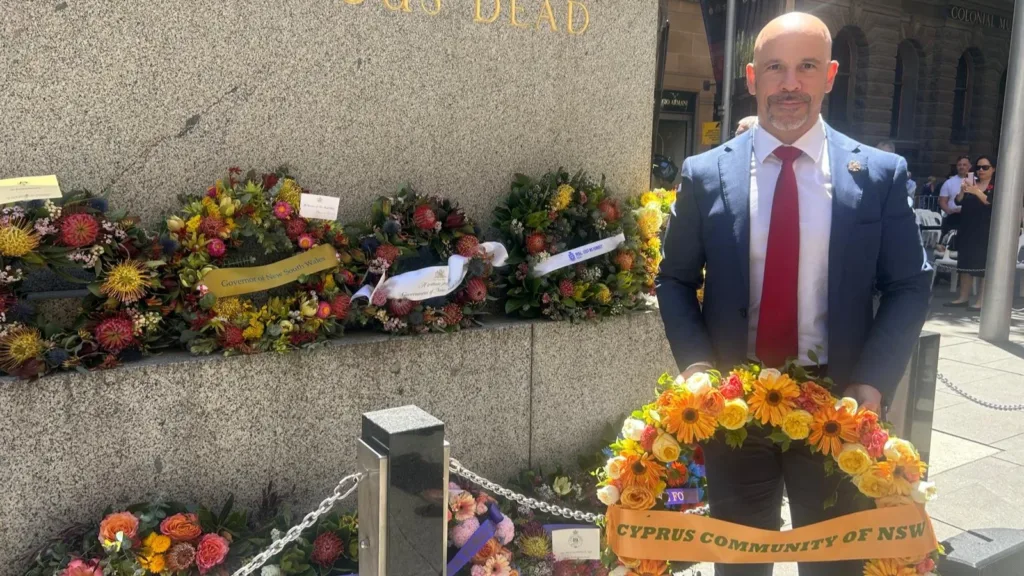By Michael Peters Kyriacou*
On Tuesday, November 11, 2025, at 11am, Australia remembers the time when the guns went silent and the brutality of World War One was finally over.
The war was to have a profound and lasting impact on a nation that was barely a decade and a half old. A total of 416,809 Australians enlisted out of a population of 4.9 million people, over 330,000 were to serve overseas, more than 38.7% of the Australian male population took part in the first World War.
The Australian Imperial Force (AIF) saw action on virtually every theatre of war, often under the command and foreign flag and commander.
It was to be Australia’s costliest conflict, with over 60,000 Australians dead, more than 155,000 wounded and many more thousands with the mental and physical baggage of war. The high male participation and casualty rate had a profound impact on the Australian community, and families in particular.
On the other side of the world, much closer to the theatre of conflict, a not so dissimilar scenario was playing out in Cyprus.
Cyprus like Australia, was the first external modern international military foray.

Cyprus was leased to Britain by the Ottomans in 1878 so the British could collect taxes from the locals to pay the debt of the Ottoman rule, the Sultan.
On 5 November 1914, Britain annexed the island after learning of a secret treaty between the Ottomans and Germany to declare war against Great Britain, France and Russia.
The people of Cyprus were sympathetic to the Allies’ cause, due mainly to the Christian Orthodox Serbian and Russians being at the centre of the conflict.
Cyprus in 1914 had a population of 287,000, more than 20,000 took part in the war effort, over 39% of the male adult population either join allied forces or supported the war effort.
Serving in the army was the only way to provide for the livelihood of their family, as Cyprus was an island that lacked the resources and government to provide for its people.
A better-known unit of volunteers from Cyprus is the Macedonian Muleteer Corps comprising of 15,910 men who saw action on the Macedonian front, northern Greece, Serbia and in Bulgaria. Some entered Constantinople marching with other Allied troops. Over 3,000 received bronze British War Medals, many others received commendation from other Allied armies including from Greece.
Volunteers received three drachmas a day, a sizeable amount for any local to receive in 1914.

Within the five military cemeteries in Macedonia, there are 30 Cypriot muleteers, and many others scattered at war graves in northern Greece, the Middle East and France.
In the First World War, Australians and Cypriots fought shoulder to shoulder, on foreign soil, under foreign command, and yet they both forged an identity, character and national ethos that was to be the kernel of the tree that was to grow into nationhood.
For the first time, descendants of the volunteers represented by the Cyprus Community of NSW and the Cypriots for ANZAC Subcommittee took part in Remembrance Day 2025, this past Tuesday, November 11, 2025.
There are hundreds of families in NSW with relatives who took part in the war effort, their sacrifices and efforts recognised.
Each year, the Cyprus Community holds events to commemorate the volunteers of all conflicts with the descendants and their families and takes part in many events including the Sydney ANZAC Day march.
If you would like to join the Cypriots for ANZAC Subcommittee or find out more about the role of Cyprus in World War One and Word War Two visit: www.cyprus.org.au
*Michael Peters Kyriacou is President of the Cyprus Community of NSW, and Member of the Cypriots for Anzacs Subcommittee
